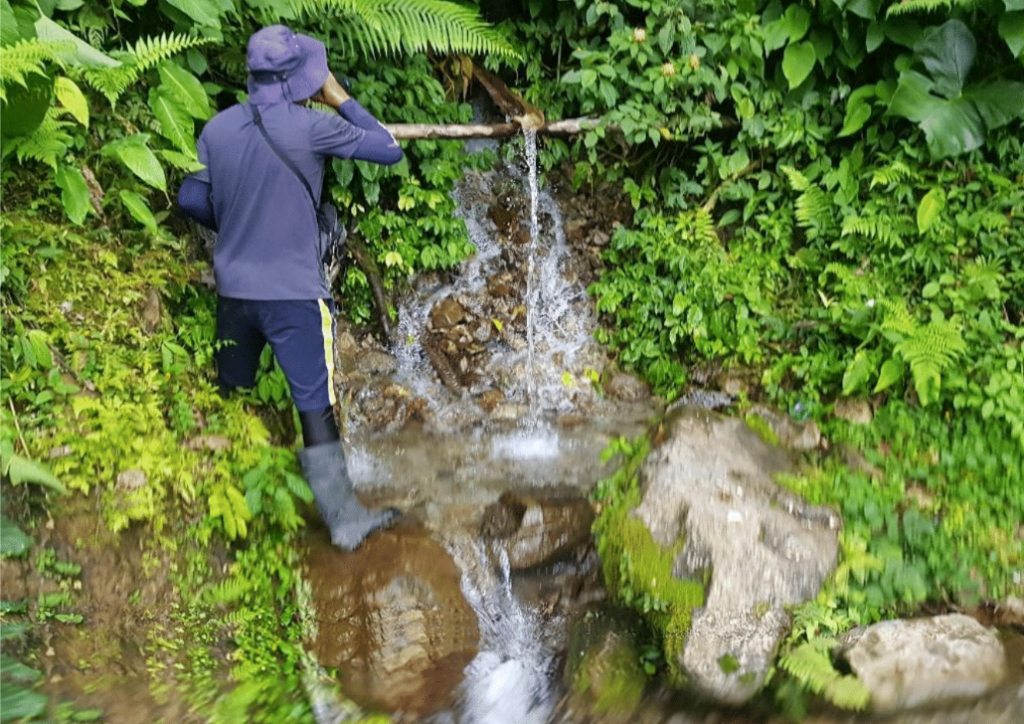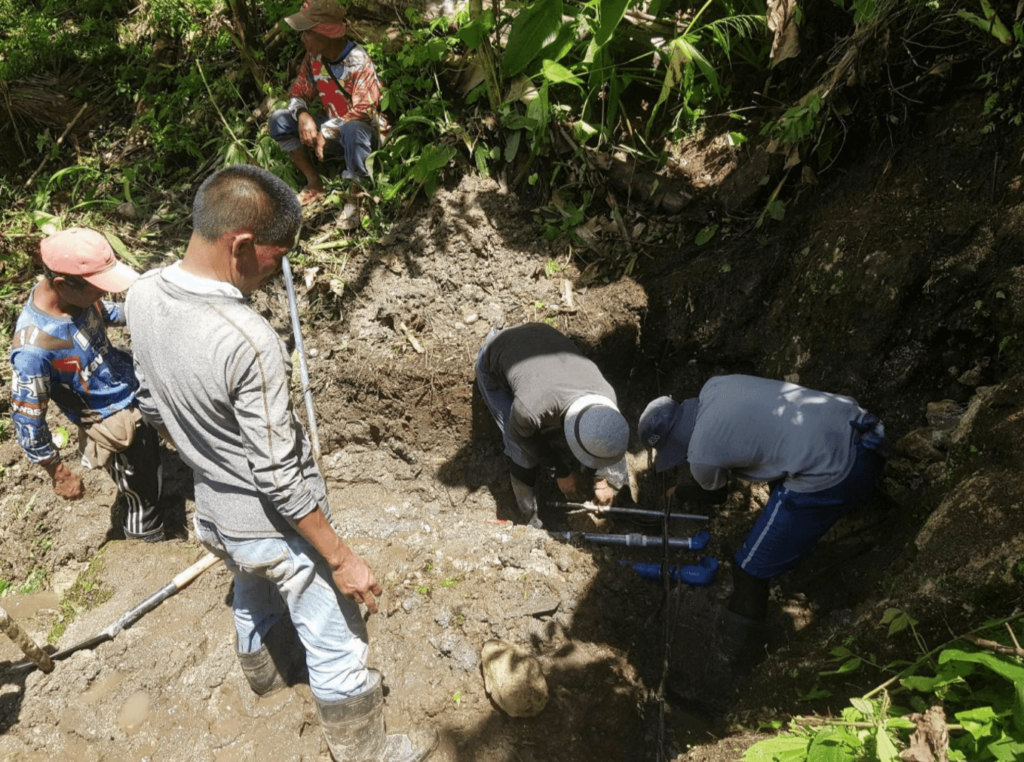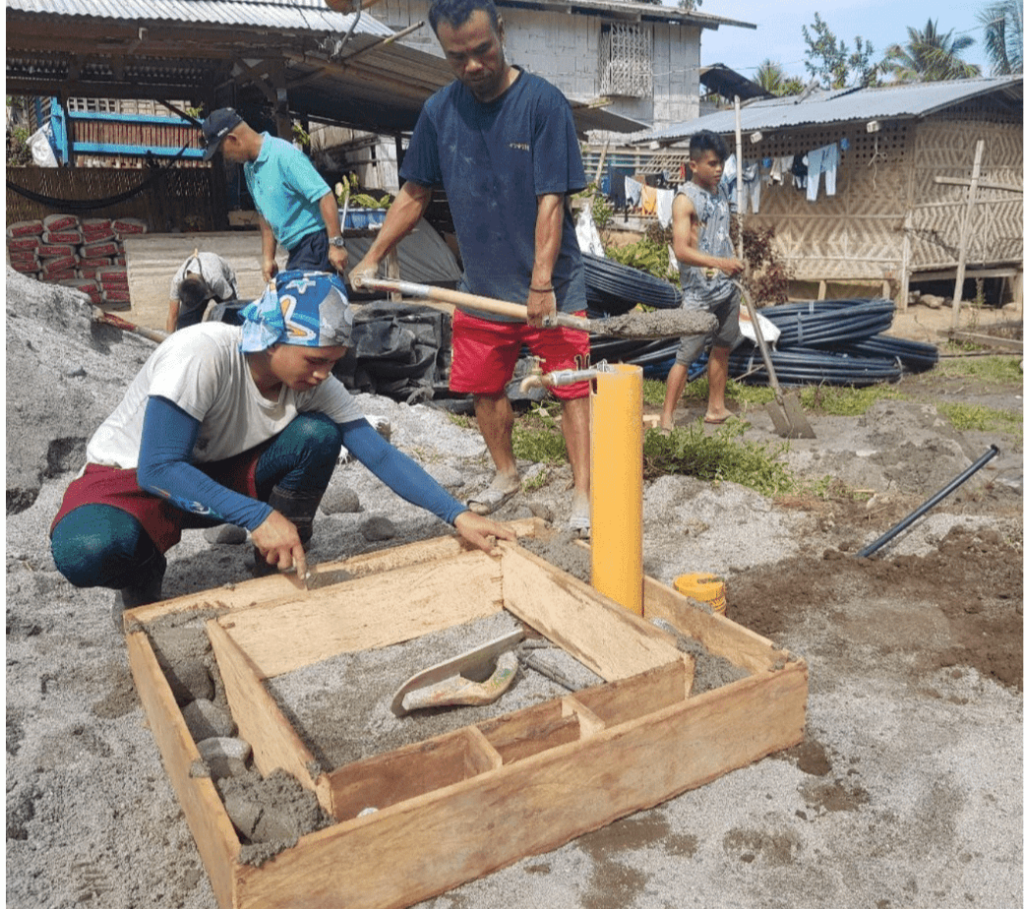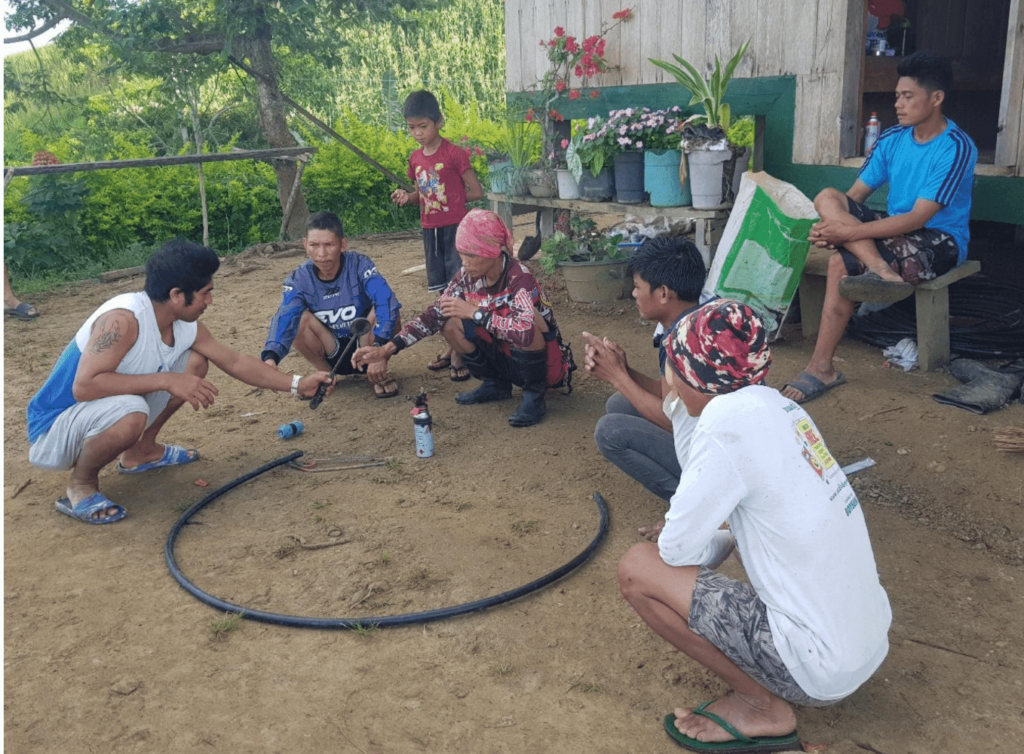Putting up water systems in the Indigenous Peoples (IP) communities is a tedious process. It demands a long process of preparation. It begins with community and area assessments. Then, followed by water source mapping and sampling to ensure that the water source will pass the standards for spring development.

Once the water source passes the potability test, then the local partners and the community will submit a project proposal. While waiting for the project proposal, the Engineer will make a quotation of the materials needed and will submit a cash advance for the procurement of the materials. It will take 3 to 4 weeks to manufacture the pipelines from the manufacturing plant in Davao City. Other materials which are available in the area will be bought in that same barangay where the water system will be constructed. Once the manufacturing of the pipelines is done, it will be delivered to the area. Now, the challenge arises because the delivery truck can only reach a certain point where the vehicle can go. From that drop-off point, the community will begin to haul the materials using motorcycles or horses.

Hauling of the materials is one of the counterparts of the community in this project.Though it’s clear from the community orientation about the responsibility of the community in the construction of the water system, still managing and organizing the community is very challenging. The local partners undergo a series of community meetings and planning to ensure a smooth implementation of the project. Once the materials are ready in the construction site the engineer, Errol, together with his team will visit the community to facilitate the construction of the said project. Another counterpart of the community during construction is manual labor. It is very important that the community and some selected individuals will learn how the construction goes because whatever happens in the water system they will be able to fix it on their own.That’s why part of the project proposal is the drafting of the policy on how to manage the water system, and the selection of officials who will manage the water system. This will ensure the sustainability of the project.

The first part of the construction of the water system is the development of the water source. After the development of the water source, they will lay down the water pipes down to the water reservoir site. Then, the construction of the water tank will begin.


Once finished, the construction of the water points follows. The number of water points to be constructed in the community will depend on the population and strategic sites.The type of the water points constructed will also depend on the needs of the community. After the construction of the entire water system the community will gather especially the selected water tenders or plumbers for a short training on how to fix the water system once needed. Engineer Errol gives an orientation on basic problems encountered in the water systems. Then, there will be a demonstration on how to do it.



